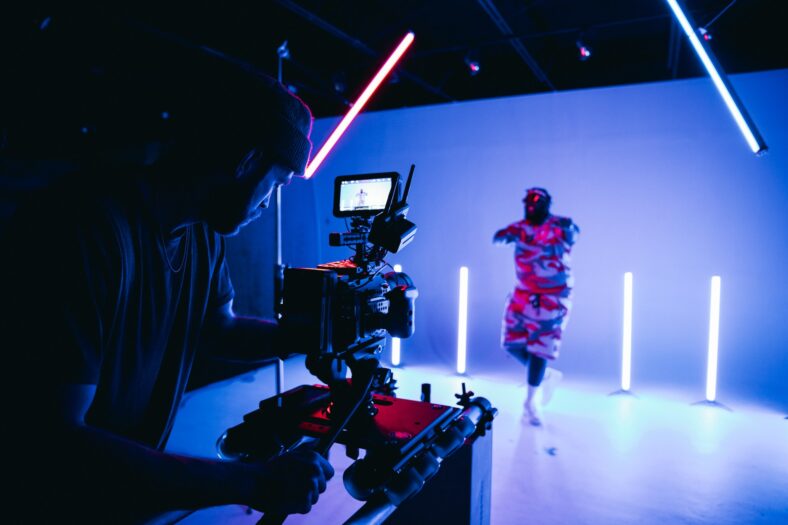Lighting is a fundamental aspect of video production that can make or break the quality of your final product. Whether you’re shooting interviews, creating narrative films, or producing commercial videos, understanding essential lighting techniques is crucial for achieving professional results.
Understanding the Basics of Lighting
To excel in video production, you must first grasp the fundamentals of lighting. The three-point lighting setup, consisting of a key light, fill light, and backlight, forms the foundation of quality video lighting. Moreover, understanding color temperature, measured on the Kelvin scale, is vital. The choice between daylight and tungsten lighting plays a pivotal role in video production.
Natural Lighting Techniques
Harnessing natural light can be a cost-effective way to enhance your video quality. Consider the time of day when shooting, as natural light varies throughout. Window lighting can be advantageous, offering soft and flattering illumination. Diffusing natural light with tools such as diffusers and using reflectors to bounce light onto your subject can yield outstanding results.
Artificial Lighting Techniques
In video production, artificial lighting is often necessary, and there are several types to choose from, including LED lights, tungsten lights, and fluorescent lights. Controlling the intensity of artificial lights is essential; dimmers and diffusion materials can help achieve the desired effect. Properly setting up and positioning artificial lights is crucial to avoid harsh shadows and ensure even illumination.
Lighting for Different Video Styles
The way you light your videos should align with the style you’re aiming to achieve. In interviews and talking head videos, professionalism is key, and avoiding glare on glasses is essential. For narrative filmmaking, lighting sets the mood and atmosphere, and practical lights can add realism. In product videos and commercials, the focus should be on highlighting product features and using accent lighting for impact.
Advanced Lighting Techniques
For those looking to elevate their video production skills, advanced lighting techniques come into play. Understanding the difference between high-key and low-key lighting can help you convey different emotions and atmospheres effectively. Creating depth with lighting involves background lights and the importance of negative fill. Specialty techniques such as silhouetting and colored lighting can add dramatic effects to your videos.
Lighting Accessories and Tools
Having the right lighting accessories and tools can significantly impact your video production. Light stands and mounting options provide stability and precise positioning. Softboxes, umbrellas, and diffusers help control and soften light. Gels and color correction tools are essential for achieving the desired color temperature. C-stands and clamps are indispensable for fine-tuning your lighting setup.
Lighting on a Budget
Budget constraints shouldn’t hinder your ability to achieve quality lighting in video production. You can explore DIY lighting solutions using household lamps and reflective surfaces. Additionally, affordable lighting kits tailored for beginners are available. Weigh the pros and cons of renting vs. buying equipment to make the most cost-effective choice.
Safety Considerations
Ensuring safety on set is paramount. Prevent overheating and fire hazards by using lighting equipment responsibly. Handle electrical equipment with care to avoid accidents. Prioritize the well-being of your cast and crew by creating a safe and comfortable working environment.
Conclusion
In video production, mastering essential lighting techniques is a journey that can lead to remarkable creative growth. The quality of your videos hinges on your ability to harness the power of lighting to convey emotions, set the mood, and capture the viewer’s attention. Whether you’re a novice or an experienced videographer, continuous practice and experimentation with different lighting techniques will undoubtedly elevate your video production skills.
